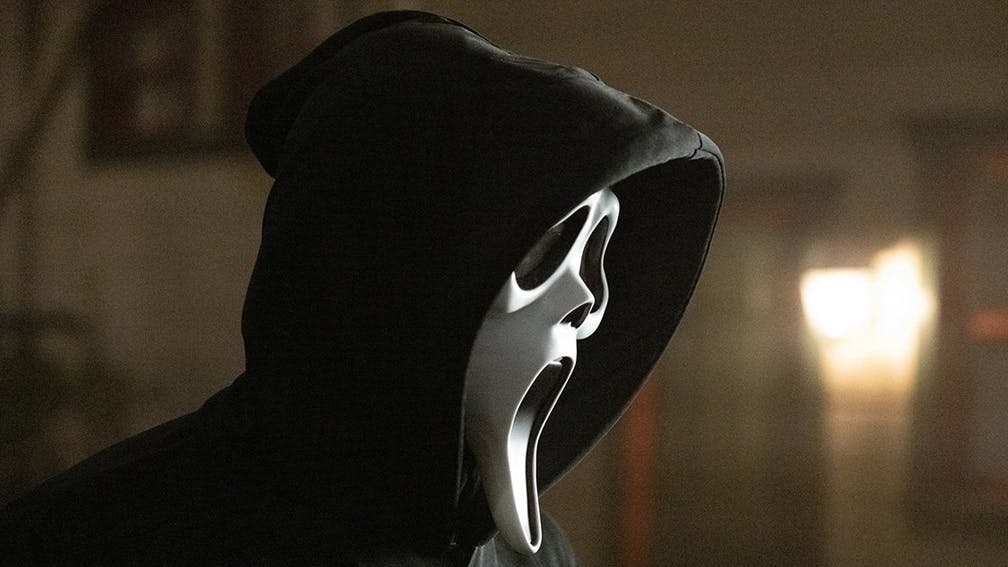We return to the town of Woodsboro, a cinematic Midsomer where murder comes with the postcode, where once again a killer in the iconic outfit is on the loose. And, indeed, on the phone using a voice changer. Naturally, this leads to teenagers musing on how it’s playing out to the rules of a horror film, and acts as a homing signal for OG characters Gale Weathers, Sidney Prescott and former cop Dewey Riley to return home to confront this new demon.
If the set-up is Very Scream, the execution is specifically Scream 1. The massive body count and occasionally bonkers sequences are matched by the macabre thrill of the kills, both in setup and gore. The Rules Of A Horror Movie stuff and self-referential movie-within-the-movie Stab series are used far more smartly than in any of the series’ later outings (at one point the ludicrousness of the later Stab sequels is openly mocked). In terms of tech, we're not back to the didn't-date-well "What are you doing with a cellular telephone, son?" police questioning of the original, but the over-use of new technology that plagued the fourth movie (yes, we get it, everyone has a video camera now, stop going on about it) has been put back in its box. And the Easter eggs – Nick Cave playing on a car stereo, street addresses – are for the sort of super-nerds who end up being the ones who done the murders anyway.
Scream’s biggest reference to itself is when one character all but says that they knows what fans want from it: blood, violence, smartly raised eyebrows and a decent puzzle over who the killer is. This is where it succeeds. Previously the franchise stuck to the rules of sequels too rigidly, including the ones where it’ll end up over-reaching and expanding its world into ridiculousness. This time, by focusing on good (if occasionally of a well-worn type) kills and keeping you guessing, questions that could trip it up – why aren't the OG cast in jail for killing all the people they have? How come hapless pincushion Dewey isn’t just a brain in a jar at this point? Why do the Woodsboro police never secure anything or do any paperwork or proper interviews about loads of murders? – are just ‘yeah, whatever’.
The behind-the-curtain impact of the first Scream can, of course, never be repeated. Horror itself has moved on into stranger new places where convention is broken all the time. But that’s not the point here. In some ways it’s tying up loose ends and sending the franchise off on a solid full-stop (as the dedication “For Wes” at the end highlights). Fittingly, it's also the best Scream movie since Scream.
Verdict: 4/5
Scream is released on January 14 via Paramount.
